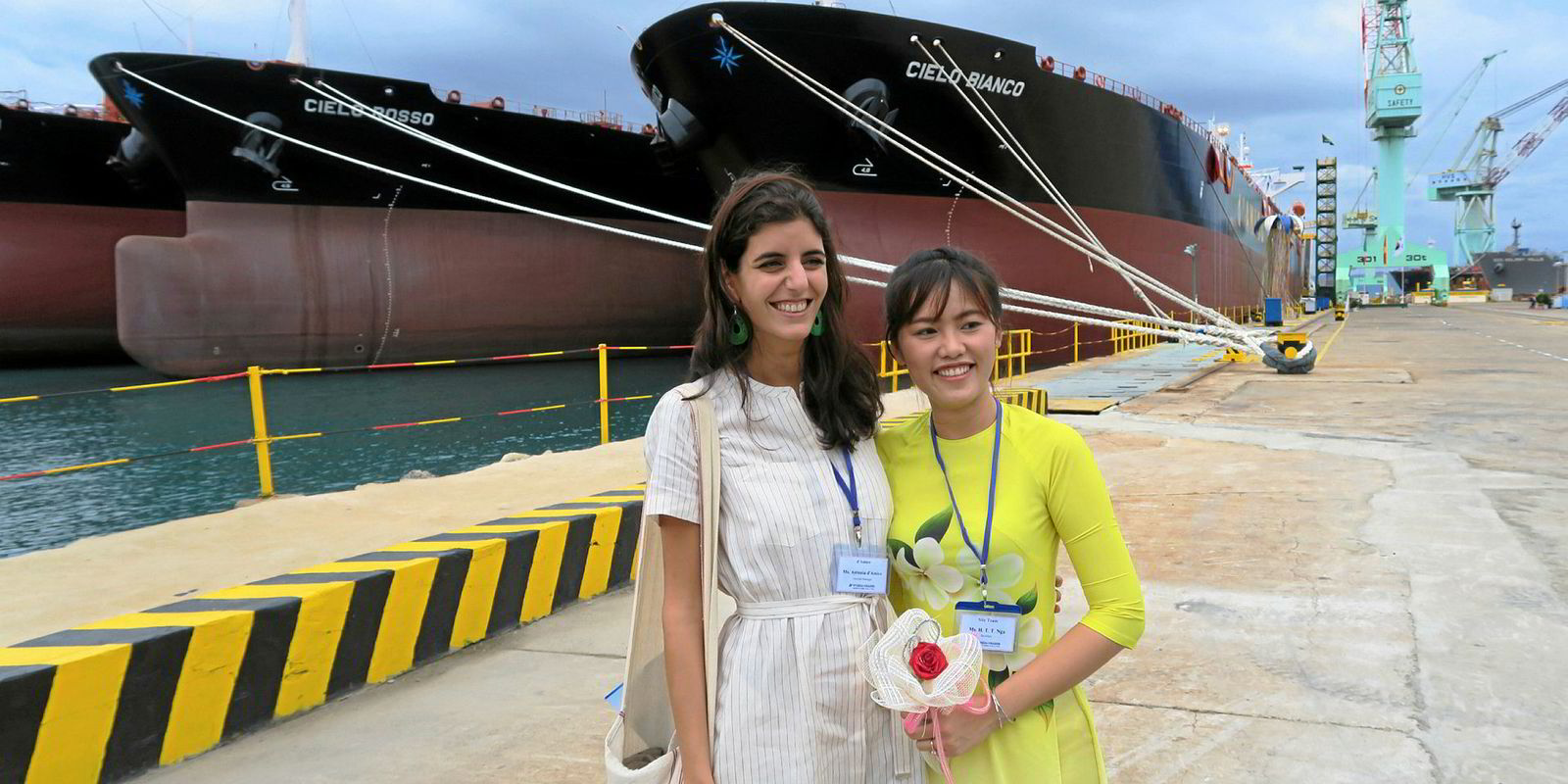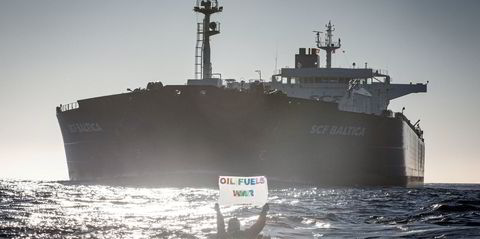A line of black Mercedes limousines slices through noisy morning traffic on the outskirts of Nha Trang, southeast Vietnam. The progress of the motorcade is eased by a police escort with flashing lights and a horn urging slower vehicles to the side.
In the lead vehicles are shipowner Paolo d’Amico, his daughter Antonia and the Italian ambassador to Vietnam, Cecilia Piccioni. Behind are company executives, shipbrokers and other business associates, all bound for Hyundai Vinashin Shipyard (HVS) for the launch of three LR1 tankers for Milan-listed d’Amico International Shipping (DIS).
The vessels are a landmark for the shipowner as the final piece in a $755m renewal and expansion programme, and take the company into a new sector of the products market.
The LR1s are also a first for the shipyard. The 75,000-dwt tankers — part of a series of six — are the largest the joint venture between South Korea’s Hyundai Mipo Dockyard (HMD) and the Vietnamese government has ever built.
An HVS executive tells TW+ the delivery of the LR1s is a “very important moment” for the company and “increases its reputation and trust” in the market.
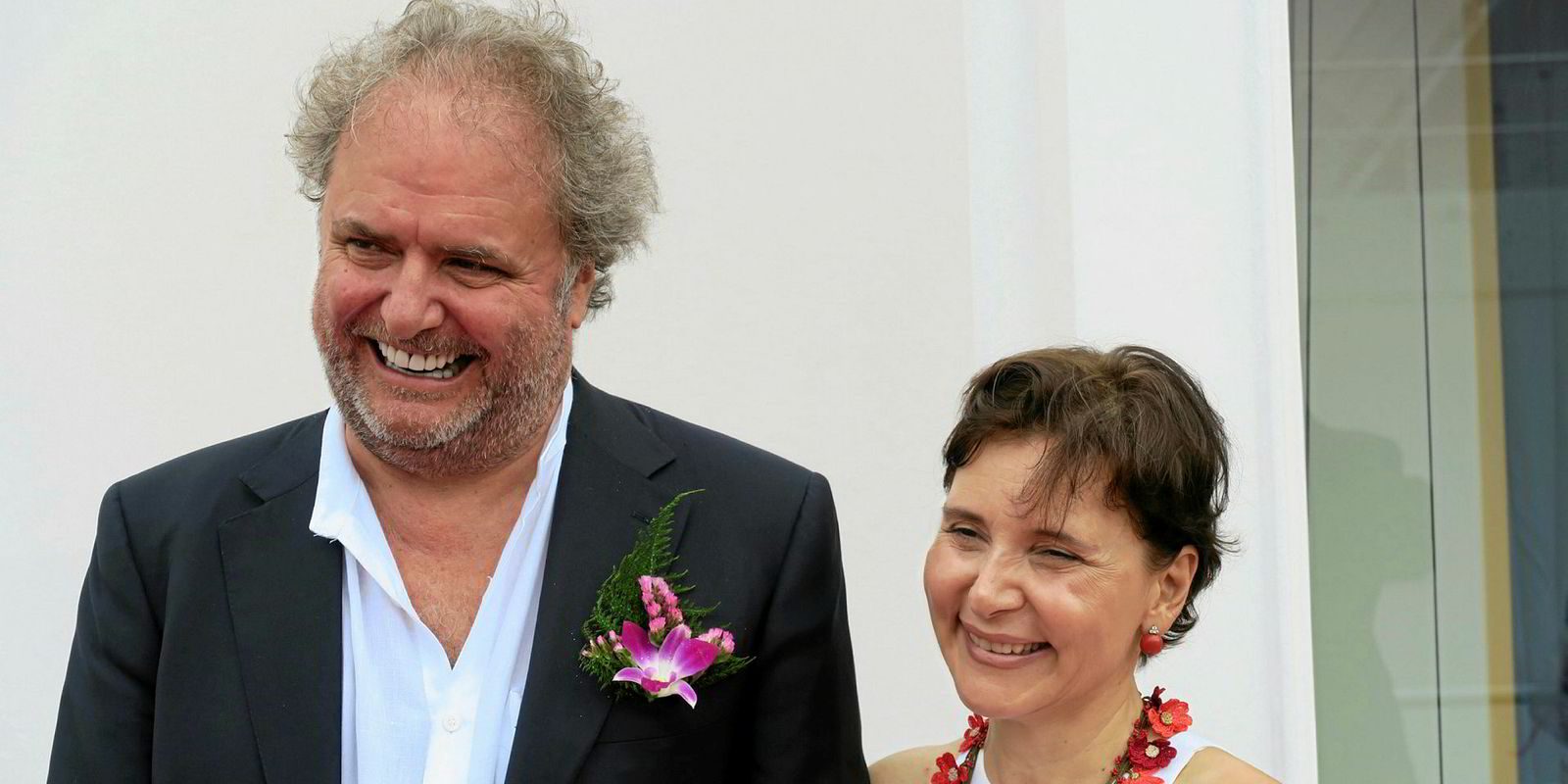
The October 2017 launch is, however, just the latest milestone in the development of the facility, which pivoted from shiprepair to shipbuilding in 2008.
HVS initially focused on bulkers, and has delivered more than 50 handymax to kamsarmax vessels. Its big break into tankers came in 2013 with medium-range (MR) ships contracted initially by DIS, Wilmar and Evangelos Pistiolis.
D’Amico was influential in introducing oil majors to the yard and helping it establish a name in the market. However, as one source points out, its efforts were “not out of pure kindness”, as switching to the yard allowed it to secure the tankers at a lower price than if they had been built in South Korea.
The HVS executive says: “In particular, the first order of MR tankers from d’Amico was the perfect opportunity to enter the products carrier market, and their good reputation was enough to attract other owners’ attention.
“D’Amico is the one who led HVS into [being a] competitive shipbuilder of MR tankers.”
Chairman d’Amico says the relationship with HMD and HVS developed naturally. “I would not say it was something that was planned, it is just something that happened,” he says.
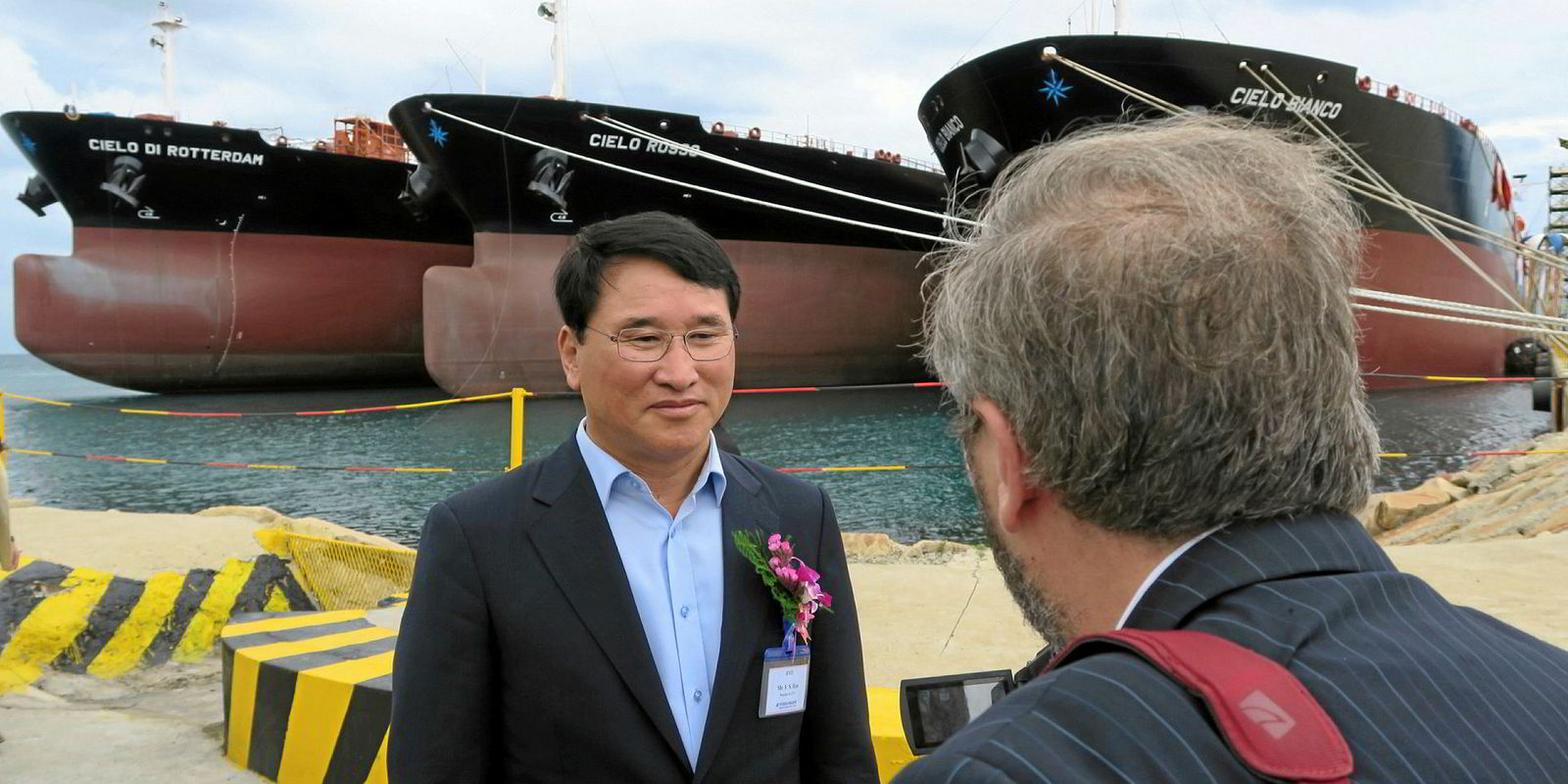
D’Amico has built 28 tankers with HMD, including 16 at the Vietnamese satellite yard, cementing what the yard calls a “special relationship”.
“When you pioneer something, number one, you have to believe in it, and two, you have to support it,” d’Amico says. “We did believe in it because of the feeling we have with Hyundai and knowing its capability of managing a yard.
“When you start doing something, you have to support it, otherwise it would be rather stupid to kill your own investment. We have been successful in this, as today Vinashin has more and more clients.”
He jokes that it is unfortunate the success has largely resulted in contracts for MRs. “I would prefer to see bulk carriers or something like that,” d’Amico quips. “But their name today is consolidated in the market.”
Many of the new ships were inked this year. HVS says the 28 newbuildings booked to date in 2017 for delivery up until 2020 is ahead of its own expectations.
The haul is widely understood to include 12 product tankers for trader Trafigura, with the yard now unable to offer MR tanker slots with delivery before 2021.
HVS’ run of success is a far cry from other satellite shipyard projects, which have had a mixed history.
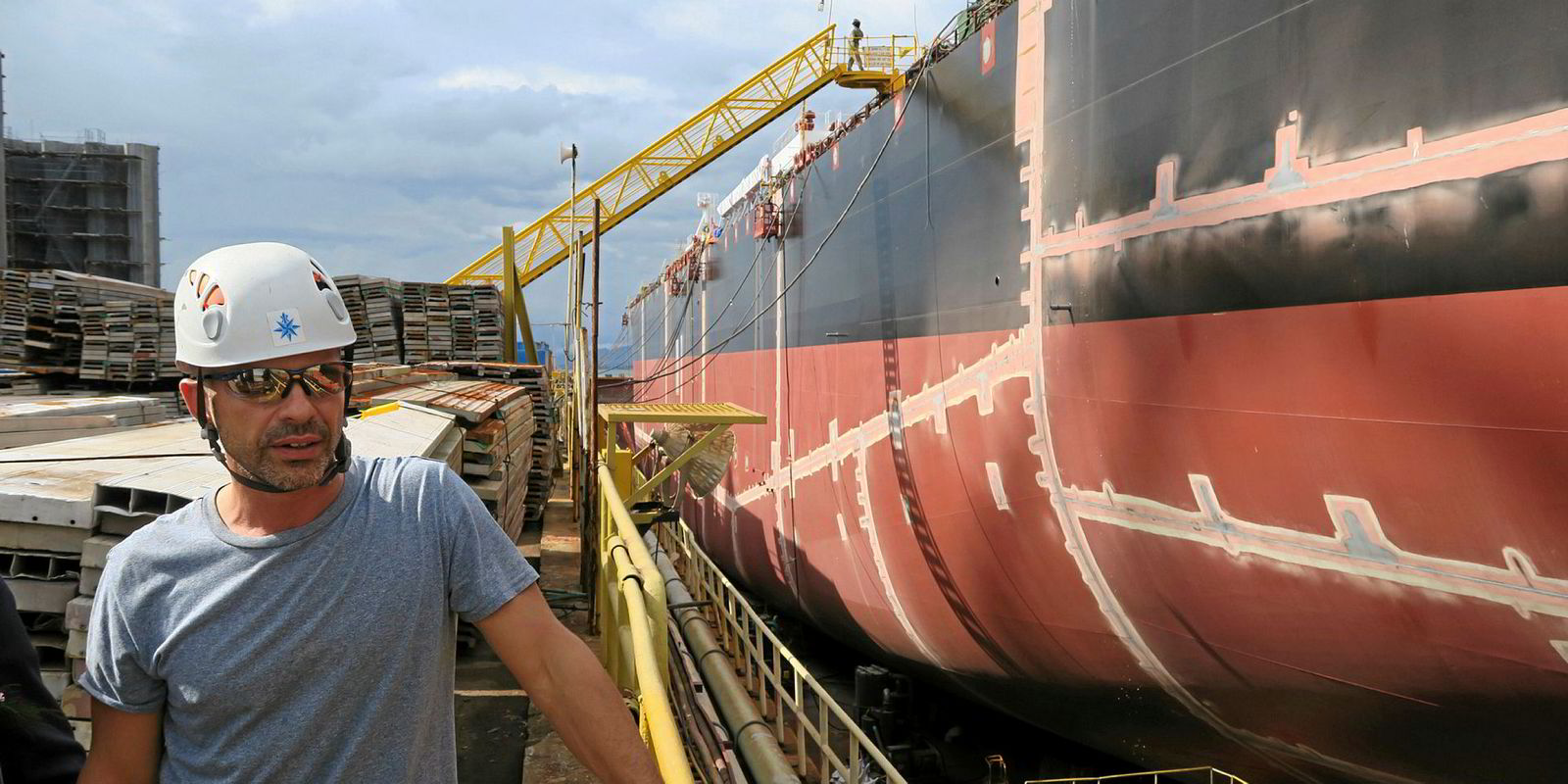
Shipbuilding sources point to STX Dalian in China as the “flag-bearer of terrible overseas expansions”, given the huge investment in a facility stationed a long distance from the nearest town where the climate restricted work in winter. Another that failed to fly as hoped is DSME Mangalia in Romania, which is listed with a solitary ship on order today.
On the other side of the coin, sources point to Tsuneishi Zhoushan and Tsuneishi Cebu as successful satellite facilities, which have attracted shipowners that had traditionally built in Japan. Others name Kawasaki and Cosco joint ventures Nacks and Dacks as well respected.
“I think satellite yards are more acceptable now than they were five years ago. Partly that is because of Vinashin but partly it’s on the basis of Tsuneishi as well,” one experienced shipbuilding man says.
“On balance, overseas yards have been more good than bad. But there have been some spectacular cock-ups.”
Greek shipowner Pistiolis affectionately refers to HVS as “my shipyard”, having suggested the idea of building tankers there to Hyundai bosses in 2012.
He has contracted 10 MRs at the facility since 2013. But given the flurry of activity this year, he turned to parent HMD for his latest tankers in November after securing berths for 2019 delivery.
“The greatest thing about Vinashin is that they make a great effort to make these ships identical to those built in Korea,” Pistiolis says. “By making that intense effort, really they have done in certain parts of the ships maybe an even better job than already-perfect HMD.”

On average, two multipurpose ships arrive at Vinashin from South Korea each month, carrying everything from engines to steel plate to supply the yard.
“The ships coming out of Vinashin are almost identical with their HMD sisters in both the design and materials used,” Pistiolis says. “More or less the assembly only takes place in Vietnam. The Hyundai Vinashin story is unique from that point of view.”
While the yard employs 4,000 local staff, activity is overseen by about 70 Korean managers from HMD. They head every department and are in frequent contact with the parent group. Parental support also comes in the form of marketing, procurement of materials, technology and after-sales.
After a successful 2017, HVS is seeking to expand further and add containerships to its bulker and product tanker offerings, the yard executive says. It is optimistic about the newbuilding market recovering next year.
“We are setting up to increase our production capacity to build up to 17 vessels in 2021,” he adds.
“To execute this plan, we are reviewing our whole system and trying to improve each stage more efficiently. In this way, the construction period will be shortened. Meanwhile, the quality shall be maintained. We have strong confidence in the bright future of HVS.”
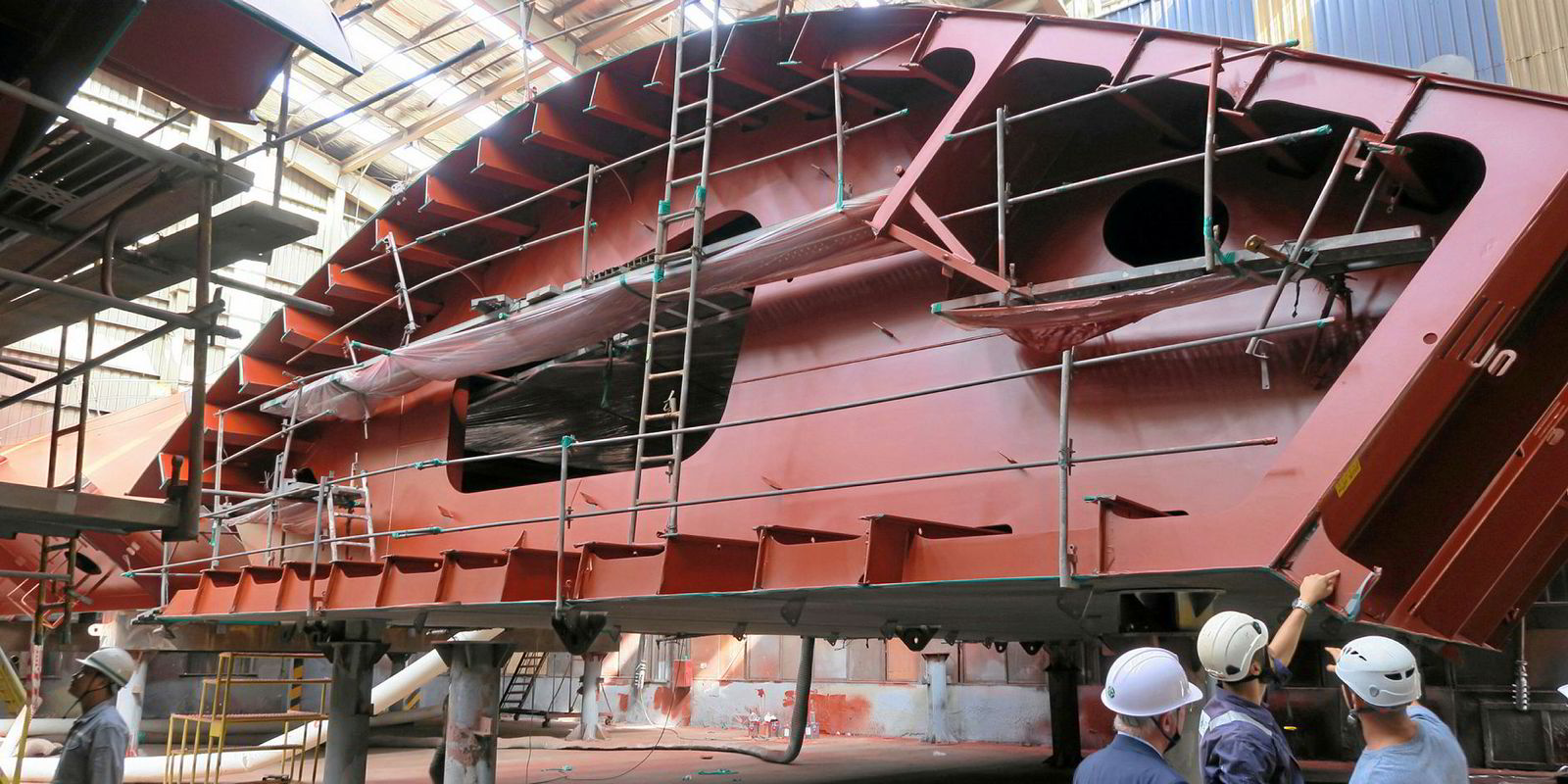
Given the developments that have made HVS the leading yard in Vietnam, coupled with changes in the South Korean labour market, some observers believe the set-up could prove a template for shipbuilders in the future. Others counter that the state of the shipbuilding market means it may be a few years before this becomes a reality.
“If you look at the overseas yards that have been successful, they are ones where the management of the parent yard has been looking for ways to average down their costs by going overseas and taking a lower labour solution to bring costs down,” the shipbuilding expert explains. “The ones that have gone wrong have been expansion for expansion’s sake.”
He believes overseas satellites could become more prevalent in the future. However, right now most of the world’s shipyards are strapped for cash and the chances of them pursuing overseas expansion in the present market are slim.
“I don’t see in a short to medium term that becoming a trend,” he adds. Such a move would require significant investment and very few targets exist that would add value to the larger groups.
“But if you had a better shipbuilding market, definitely. Korea has become a high-labour-cost environment and China is rapidly going the same way,” the expert says. “A labour-intensive business like shipbuilding tends to gravitate towards cheap labour.”
